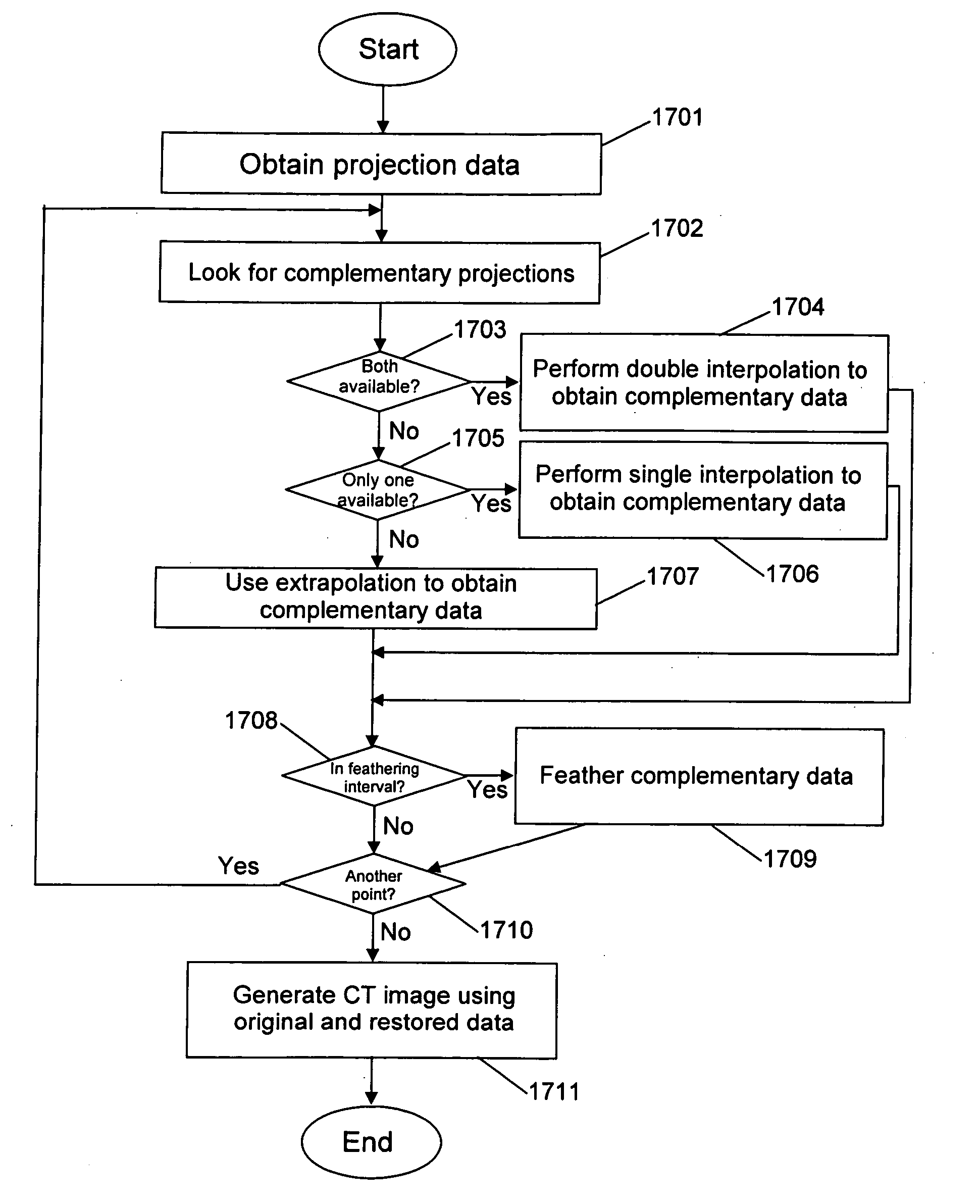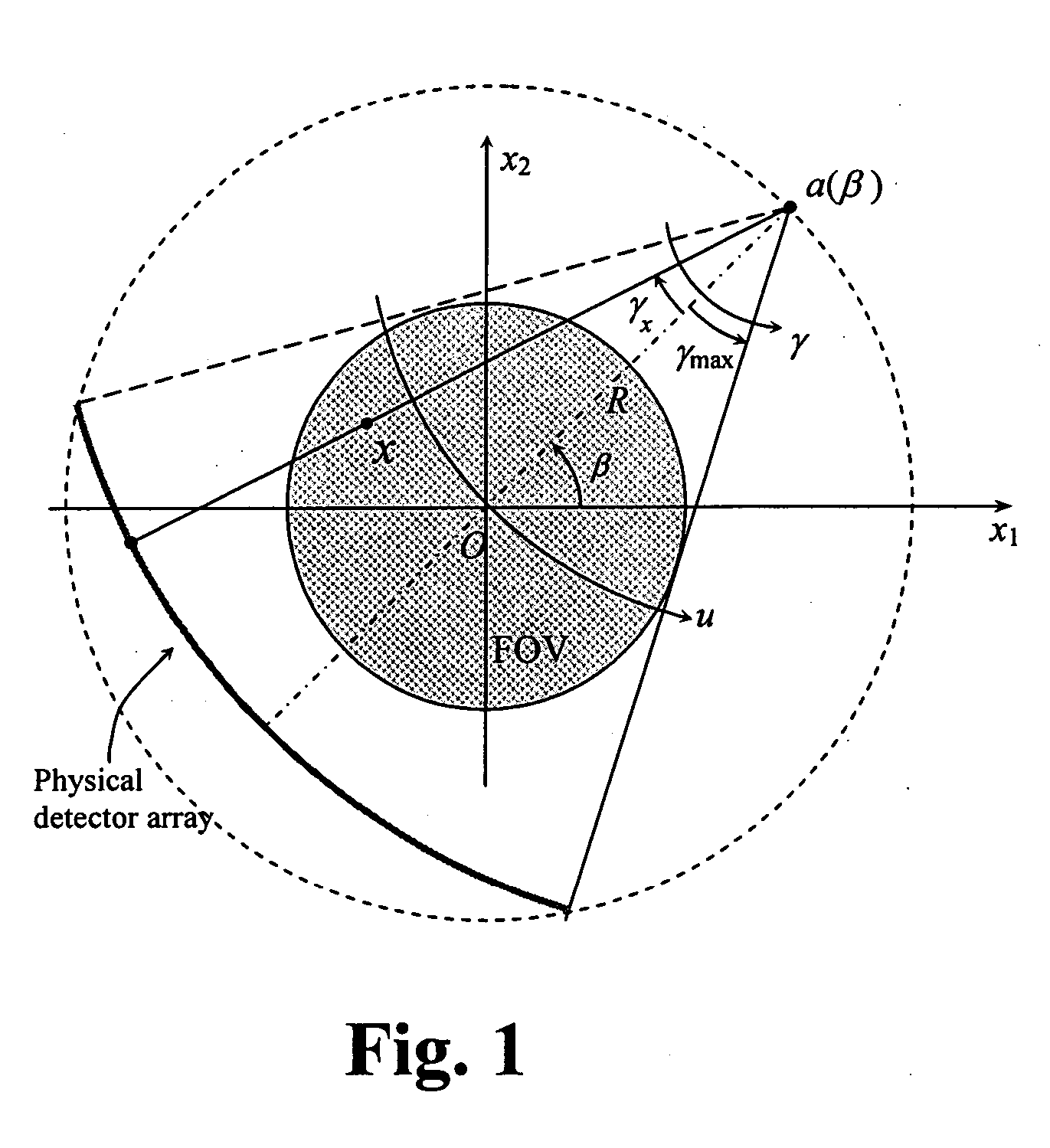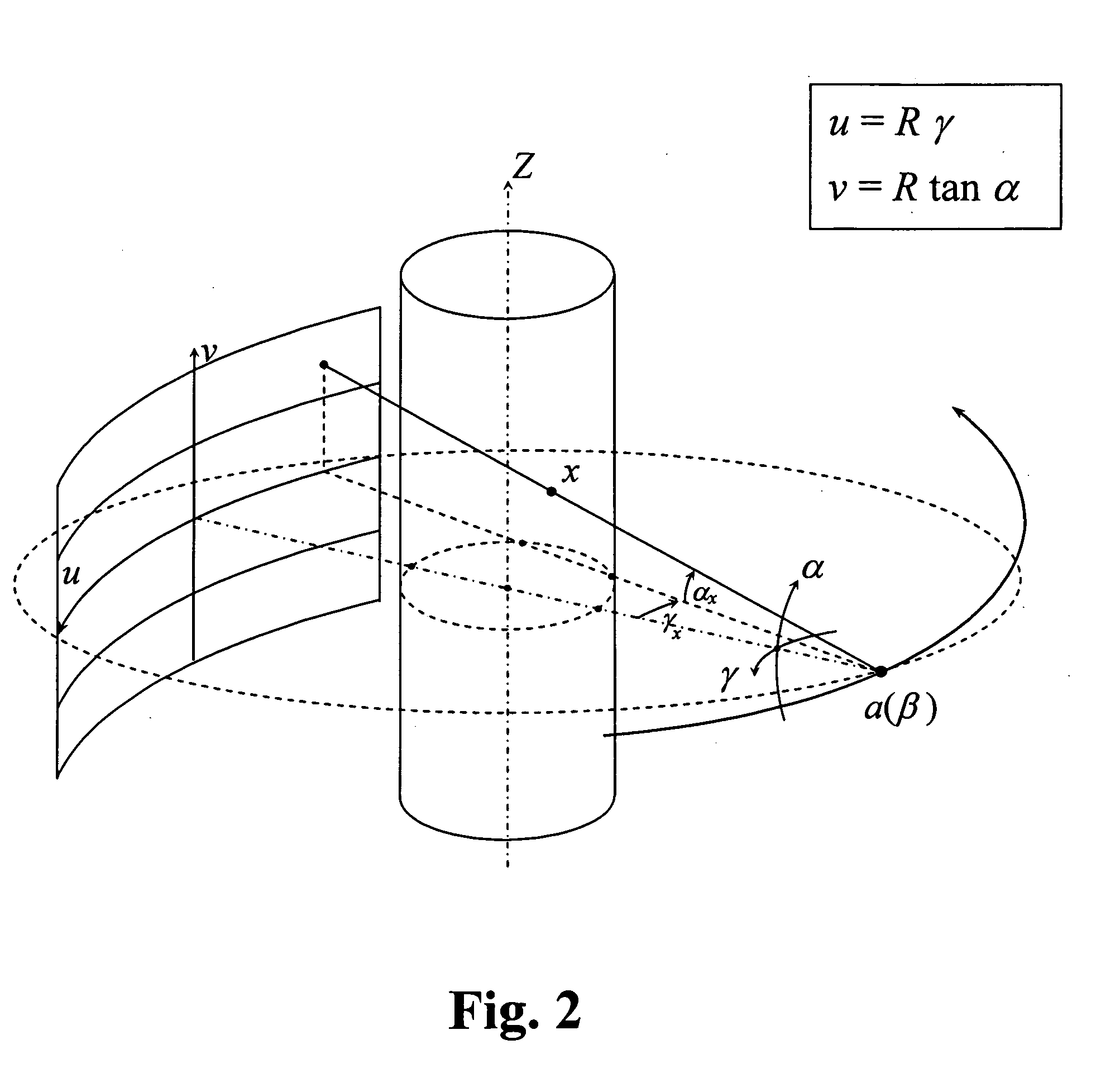Method for restoring truncated helical cone-beam computed tomography data
a computed tomography and helical cone technology, applied in the field of restoring asymmetrically truncated imaging data, can solve the problems of asymmetric truncation, no new developments to take into account the cone angle with regard to the weighting function, and the uncertainty of the truncation level of often inevitable truncation, etc., to achieve the effect of redundancy of asymmetrically measured data
- Summary
- Abstract
- Description
- Claims
- Application Information
AI Technical Summary
Benefits of technology
Problems solved by technology
Method used
Image
Examples
Embodiment Construction
[0055]FIG. 5 illustrates the notion of a complementary ray. A fan beam ray (β,γ) has a complementary ray (β+π+2γ,−γ) such that g(β,γ)=g(β+π+2γ, −γ). Suppose that fan beam data are available and that the entire FOV that would be needed to fully cover the object, g(β,γ), β>0, −γmax≦γ≦γmax, exceeds the detector angular range. For instance, there might be a truncation area corresponding to γT≦γ≦γmax, γT>0 while the data are known for −γmax≦γ≦γT. See, e.g., FIG. 4. It follows that for a truncated ray (β0,γ0) with γT≦γ0≦γmax, the complementary ray (β0C,γ0C)=(β0+π+2γ0,−γ0) is known since −γmax≦γ0C≦−γT.
[0056] The projection angles β±π+2γ are called complementary to the ray (β,γ). For a circular geometry, it does not matter from a purely geometrical standpoint which complementary projection is used since g(β+π+2γ,−γ)=g(β−π+2γ,−γ). However, it turns out in practice that using a weighted sum of both complementary projections, e.g., g(β,γ)=w1g(β+π+2γ,−γ)+w2g(β−π+2γ,−γ), where w1, w2>0 and w1+w...
PUM
 Login to View More
Login to View More Abstract
Description
Claims
Application Information
 Login to View More
Login to View More - R&D
- Intellectual Property
- Life Sciences
- Materials
- Tech Scout
- Unparalleled Data Quality
- Higher Quality Content
- 60% Fewer Hallucinations
Browse by: Latest US Patents, China's latest patents, Technical Efficacy Thesaurus, Application Domain, Technology Topic, Popular Technical Reports.
© 2025 PatSnap. All rights reserved.Legal|Privacy policy|Modern Slavery Act Transparency Statement|Sitemap|About US| Contact US: help@patsnap.com



